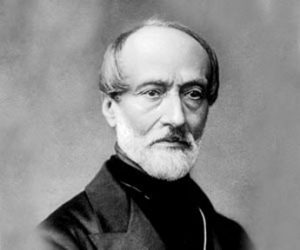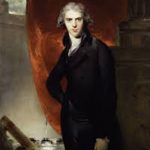Giuseppe Mazzini was an Italian revolutionary, born in Genoa, a son of a medical doctor whose radical views were impressed on Giuseppe as a boy. He was born in 1805 and before twenty he had enrolled with the Carbonari. He would spend the rest of his life preparing for the social revolution he believed would unite his country.
His views got him exiled from both Genoa and Piedmont (North Italy) when he was twenty-six. By now he had enough of the Carbonari, tired of their ineffectiveness, and formed his own radical group – Young Italy – in Marseille, the most southerly city in France. He lectured his new group, telling them that sovereignty, as such, resides in the nation, and that a republic was therefore wholly necessary. He proposed that the ordinary people of Italy should join in an uprising against Italy’s rulers. The latter could be both native and foreign, because swathes of Italy belonged following Treaties to foreign countries such as Spain and Austria. Mazzini insisted that the Italian people should perform the uprising themselves, not counting on foreign aid, though he admitted there would certainly be foreign intervention.
Not being a fool he knew that the people must be offered material benefits, but that everything families and their friends had should be sacrificed to the Cause; even their religion, for most of Italy was devoutly Catholic, and Mazzini told them Christianity was merely an ally of all kings and despots. This is what he told them, but all radical revolutionary leaders throughout History have had their eccentric side – and Mazzini was himself deeply religious, indeed he personally thought he saw a divine purpose in uniting Italy and developing the national state. This would lead, he said, to a united Europe and later a world at peace.
No revolution anywhere can be started and accelerated without the support of the middle classes, as students of History can see in both the French and Russian Revolutions (q.v.), and therefore Mazzini disliked class conflicts and sought to dismiss it from the mind of the working classes. “We do not wish,” he said, “for a revolutionary dictatorship such as the Jacobins had, because we hate fraternal bloodshed,” and added, “we do not want terror created into a system.”
Mazzini made for London, always a safe harbour for revolutionaries, after being expelled from two more places, France and Switzerland. From here he orchestrated several uprisings in Italy, all failures, and earned himself the death penalty in his absence (1833). Fourteen of his conspirators were not so lucky and were executed after trying to persuade the army in Piedmont to revolt. In the revolutions of 1848 Mazzini was more successful when he became a Triumvir (shades of Ancient Rome!) of the new Italian Republic after Pope Pius IX was forced to escape with his life, but the fledgling Republic was abolished by the looming presence of French troops in 1849.
Mazzini tried several more uprisings, but his influence was steadily declining, as the moderates looked to Piedmont for an attempt to unite Italy. Then he introduced an important new element – Garibaldi (q.v.), but was betrayed when Garibaldi declared he wanted a new united Italy but under a king, Victor Emanuel II. Mazzini looked on the Risorgimento (q.v.) as a failure and became embittered and depressed. Still, his unquestioned bravery – again and again he risked his life in clandestine visits to his country – and dedication inspired others, expecially Cavour (q.v.) into taking action which would eventually lead to unification.









[…] A picture of Giuseppe Mazzini. Credit General History […]